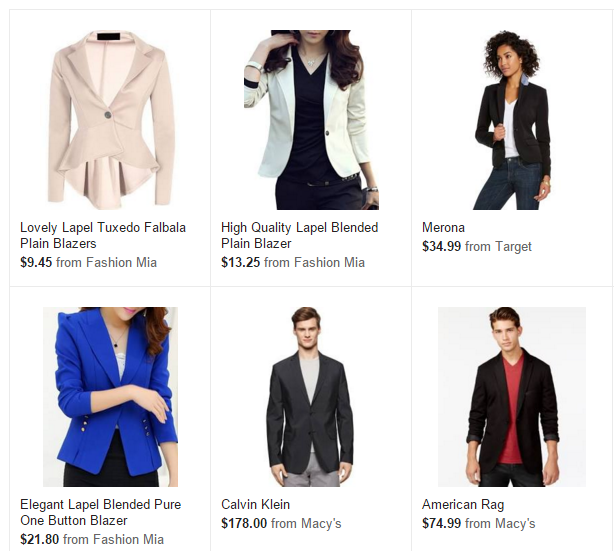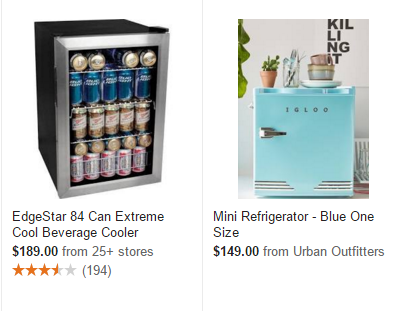The Pros & Cons of Product Level Ad Groups in Google Shopping Campaigns

If you have a large data feed some marketers feel that managing bids at a product level is completely unrealistic, which is why many retailers segment their products based on attributes such as brand, category, product types, etc.
In some ways, by assigning multiple SKUs to a single ad group, it can simplify catalog management but it can also limit the amount of data you can harvest on a product level.
Knowing the specific search terms that are attributed on a product level can have a significant impact on your campaign strategy. By accessing this level of granular data, marketers can make better informed bidding decisions and optimize their catalog to fit the needs and goals of their business.
So how can retailers gather product level search term data?
 According to Jason Bell, Senior Account Analyst at CPC Strategy, “The only way to do this is with a one product per ad group campaign architecture. So far the benefits of this type of structure greatly outweigh the cons.”
According to Jason Bell, Senior Account Analyst at CPC Strategy, “The only way to do this is with a one product per ad group campaign architecture. So far the benefits of this type of structure greatly outweigh the cons.”
In the following post, we sat down with Bell to discuss the advantages and potential disadvantages of structuring your Google Shopping campaigns based on an individual product per ad group.
When you break out one product per ad group you can access all the same information you would normally be able to see for multiple SKUs in a single ad group.
The biggest difference is that you can identify a specific search term as it relates to a single SKU.
This allows retailers to gather detailed data on how customers are searching for their products.
This could be useful if you are trying to promote a new product. For example, an outdoor supplies company introduces a new camping tent. This particular style of tent is not associated with any major brand name on the market yet – so its imperative that retailers figure out what search terms customers are using in their query for this style of tent.
By isolating the new SKU – marketers can determine which keyword search terms are popular for this search query. This could potentially give retailers a leg up on their competitors and avoid wasted ad spend.
If you want to know if a specific item showed up for a specific search term, this campaign structure will help you answer that question.
Pro-Tip: One of the valuable metrics you can access through a single product per ad group structure is the product level impression share. Impression share is the number of impressions received divided by the estimated number of impressions you were eligible to receive.
Eligibility is based on an ad’s targeting settings, approval status, bids, and Quality Scores. When you have multiple SKUs assigned to an ad group, the only way you can find the product level impression share information is if you are using custom labels.
Negative keywords are important because they help retailers sculpt or refine the reach of their targeting. Without taking a closer look at the search terms per SKU, retailers might not come across these types of terms and could miss out on an opportunity to leverage a keyword for an advanced campaign strategy.
Negative keywords help to ensure (for low quality or unqualified searches), that ads are not showing in places they shouldn’t be.
For more on negative keyword strategy check out our blog post, “How to Optimize Your Campaign with AdWords Negative Keywords“
 Understanding what specific search terms your customers are using to find your products can also have an impact on your feed. With this information marketers can make informed feed optimizations by adding keywords or rearranging titles.
Understanding what specific search terms your customers are using to find your products can also have an impact on your feed. With this information marketers can make informed feed optimizations by adding keywords or rearranging titles.
For example, a retailer sells mini refrigerators on Google Shopping.
In their feed they use the search term “icebox” but thanks to the product level data they realize this is not how most people are finding their product. They discover “cooler” is much more popular among the search query.
With this product level information, they can go directly to the data feed and insert the term “cooler” which can lead to more impressions, clicks and stretch their current budget a lot further than it did before.
When retailers can view their products on an individual level – they can make better informed bid decisions based on that specific SKU. For example, you might want to ask “Which of my products convert the best?” or “Do I have seasonal products that I want to increase exposure for Valentines Day?”
When you can segment top selling products by SKU level, you’ll want to bid high on these to ensure they gain exposure on Google Shopping.
With the multiple SKU per ad group structure, it can be difficult to connect data if a product switches between custom labels.
But when products are broken out on a singular level, it becomes much easier to keep track of this data.
If a best seller is out of stock, it can be difficult to navigate through the feed to locate this information if your campaigns are built on a multiple SKU per ad group level.
“By having a product level break down it would be much easier to find that out. You can see the performance trend drops down to zero – which could save a marketer a lot of time instead of having to dig through the account,” Bell said.
Additionally, the one SKU per Ad Group eliminates the need to expand/collapse bidding trees in Adwords UI, so that everything only has one layer.
Of course, with any shift in strategy or campaign structure, there will be a fair share of risks to consider. One of most common disadvantages to keep in mind with product level ad groups is scalability.
Retailers should keep a close eye on time management to be sure the results are not counteractive. To run a true test for a product level build out, marketers should break down parent SKU’s into their own ad group – based on size, color, etc.
The total number of shopping ad groups will increase considerably, which could make it more difficult to view on a holistic level and manage performance across various groups.
As you can image with hundreds or thousands of SKUs this could become tedious, which is why we suggest a hybrid approach.
Build out your top SKUs into ad groups and maintain catch all* campaigns around all other product types. This is probably your best approach to early testing with product level ad groups so you don’t get too far in over your head. Retailers should keep in mind, there is a 20k ad group limit per campaign as well.
*Pro-Tip: The All Products Ad Group is important because it acts as a ‘catch all’ for your Google Shopping campaigns. Without it you risk leaving some (or many) of your products out of the ad rotation.
For more on product level ad groups, email [email protected]
